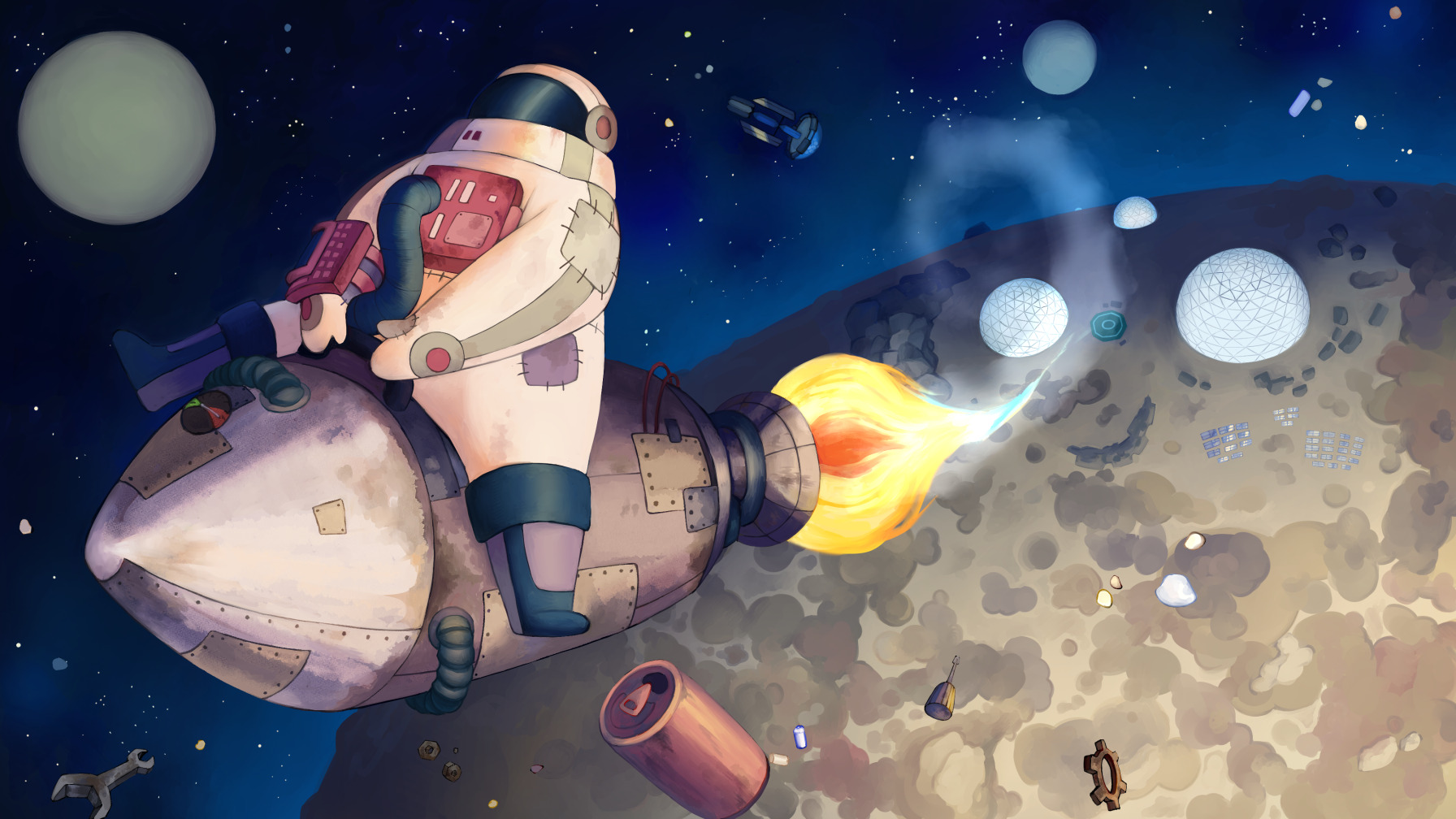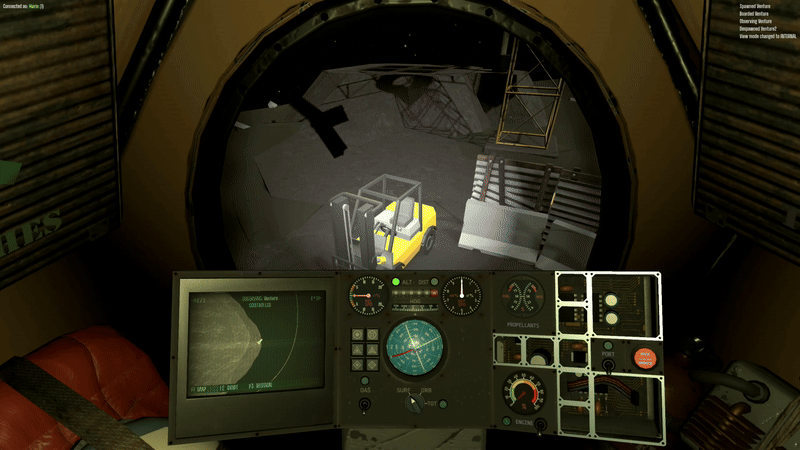A multiplayer space simulation game featuring realistic orbital mechanics, persistent player bases and set in a post-apocalyptic Solar System.

Earth and Mars went silent almost simultaneously. The colonies soon followed. Many years later, only rumors and wrecks remain for the few scattered survivors.
Some remote outposts have survived, but fewer and fewer transmit as the years pass. Yours once was a waste processing facility on a distant asteroid that nobody cared about. Luckily.
The “Junkyard”. Your home and your space agency. It has seen better times. The power flickers. Supplies are low. Build spaceships from scrap. Fly them to forgotten outposts and derelicts. Scavenge for resources and parts and bring home the valuable loot, as a solo, or in a pack of space wolves.
The cockpit is yours, pilot!
Features
Realistic Spaceflight
playableA space simulation balanced between Newtonian physics and fun. Objects' orbits are shaped by mass, velocity, and gravity. And more often than not, things explode on impact.

Scrappy Spaceships
playableAlcubierre drives, force shields, plasma scoops — all of that is either long lost or never existed. Your tanks? Beer kegs. Your hull? Pipes and sheet metal. Your dish antenna? A hammered road sign. Whatever scrap can be repurposed into a bucket of bolts capable of spaceflight is an acceptable engineering solution.

IVA
playableControl your spaceship by operating its systems from within the cockpit. Flip switches, press buttons, turn knobs, read gauges and analog indicators. No high-tech holograms or HUDs — real pilots need to feel the machine.

Single and Multiplayer
playableDesigned with multiplayer in mind, the game can be played on self-hosted servers with friends, but also locally. Community servers are coming soon.

Survival
in progressEvery can of food, every drop of water, every piece of gear is hard-earned. Your agency depends on you.
Persistent World
in progressPlayers come and go, but the world lives on and keeps evolving. Spaceships and their crews continue flying along their trajectories, and bases operate autonomously — until the supplies run out.
EVA
in progressStep outside your ship and go for a spacewalk or a scavenging mission on the surface. Keep an eye on your oxygen, water, and food to avoid dying from asphyxia, dehydration, or starvation.
Resource Management
in progressFuel is limited and every mission requires careful planning. Your life support system's reserves are limited, so manage inventory, keep bases supplied, and decide what to scavenge, trade, or haul between outposts
Mod support
in progressAn open codebase with full support for modding parts, missions, and even core gameplay mechanics.

